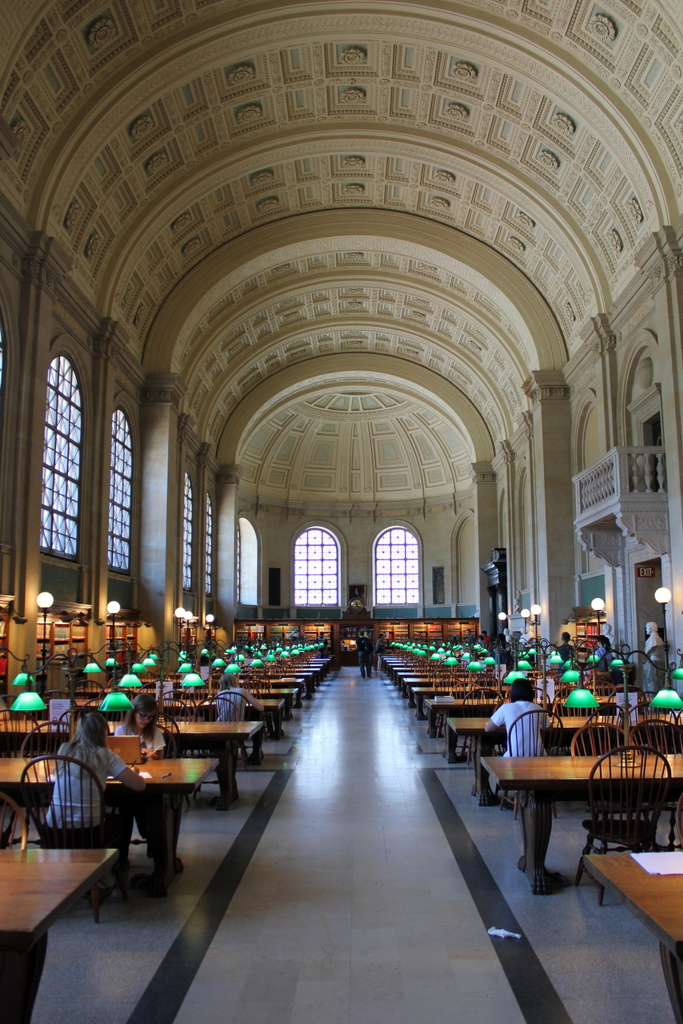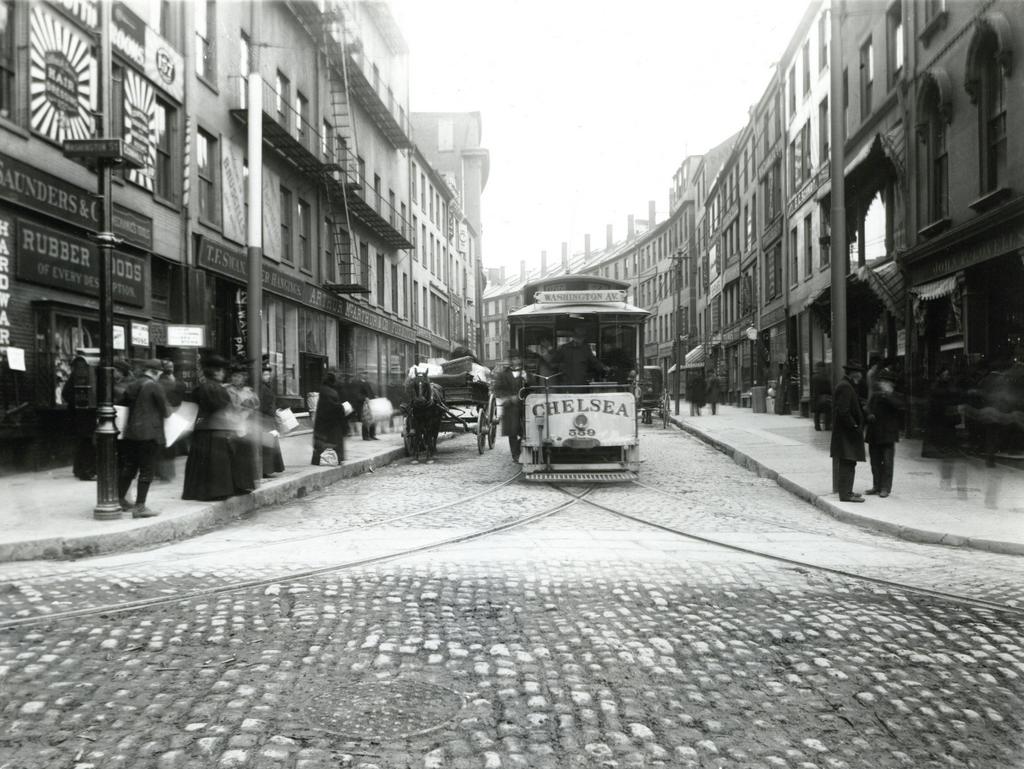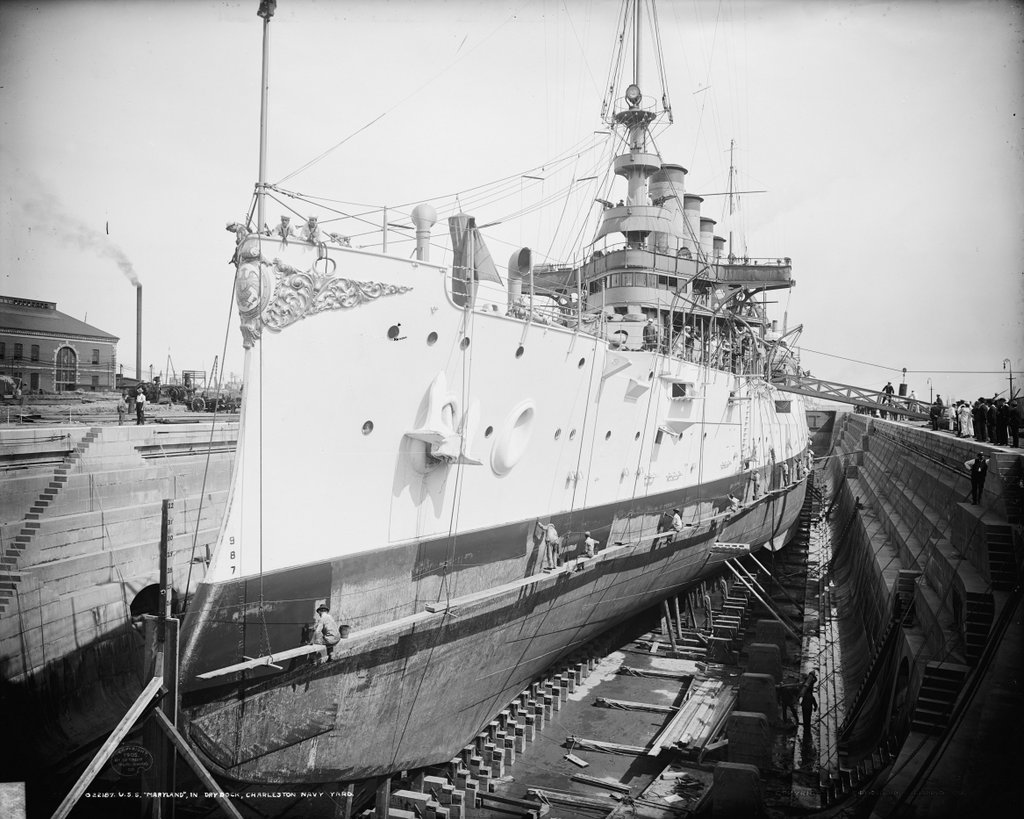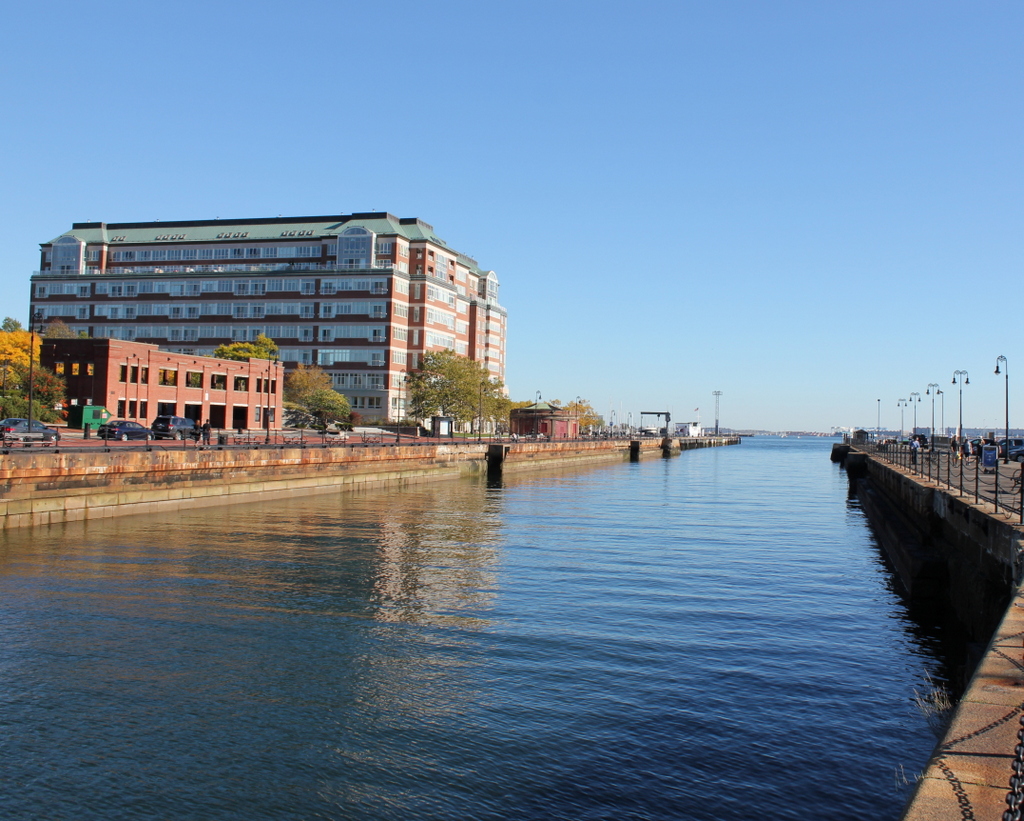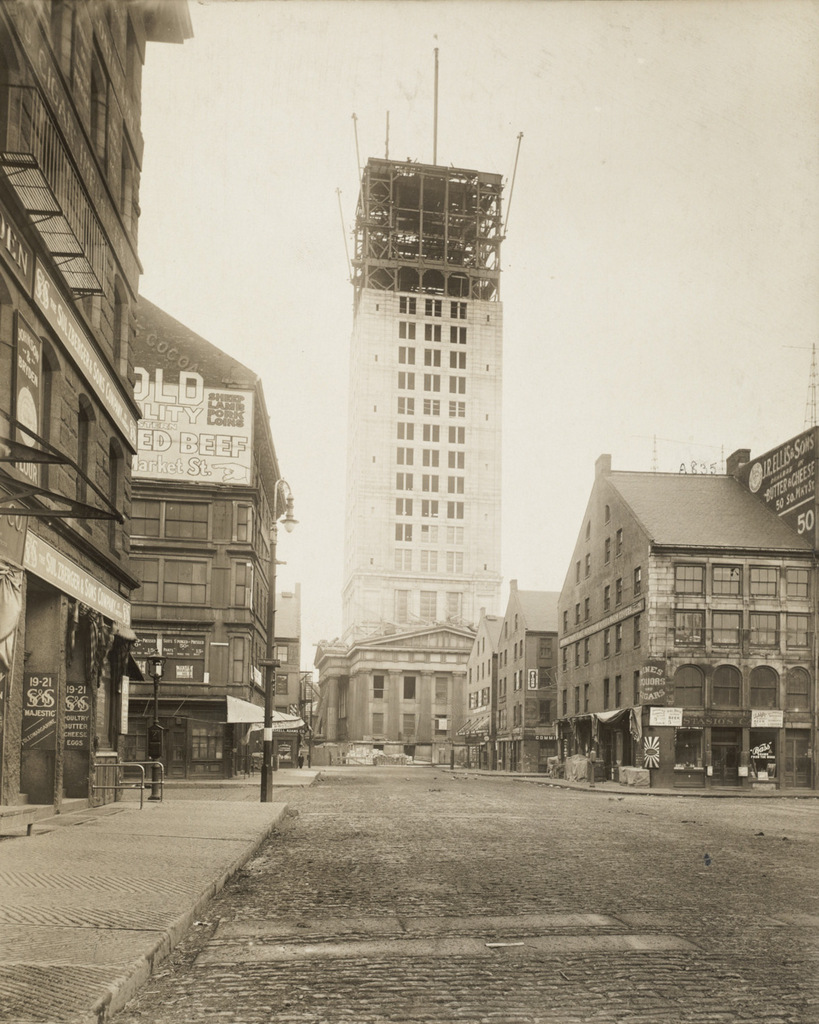Another view of Bates Hall in the McKim Building, around 1895. Image courtesy of the Boston Public Library.
Bates Hall in 2016:
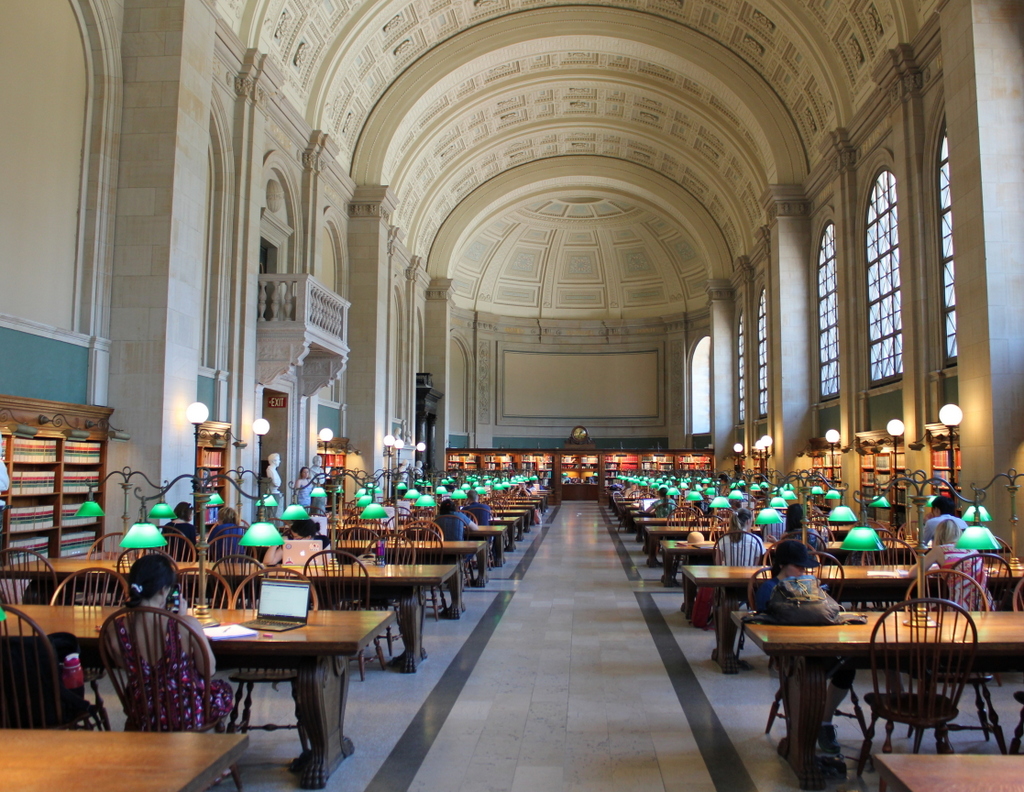
Like the previous post, these photos show Bates Hall, the main reading room at the Boston Public Library, as it appeared when it first opened in 1895 and in 2016. The view in the other post was from the opposite side of the room, but both angles give an idea of the size of this room, which runs the entire length of the building and has a 50-foot tall, cathedral-like vaulted ceiling and massive windows on the Copley Square side. The only difference here in these two photos is that the first photo has no people or books, so presumably it was taken in the weeks or months before the building was completed and opened to the public, perhaps to give Bostonians an idea of what their unprecedented new library would look like.



